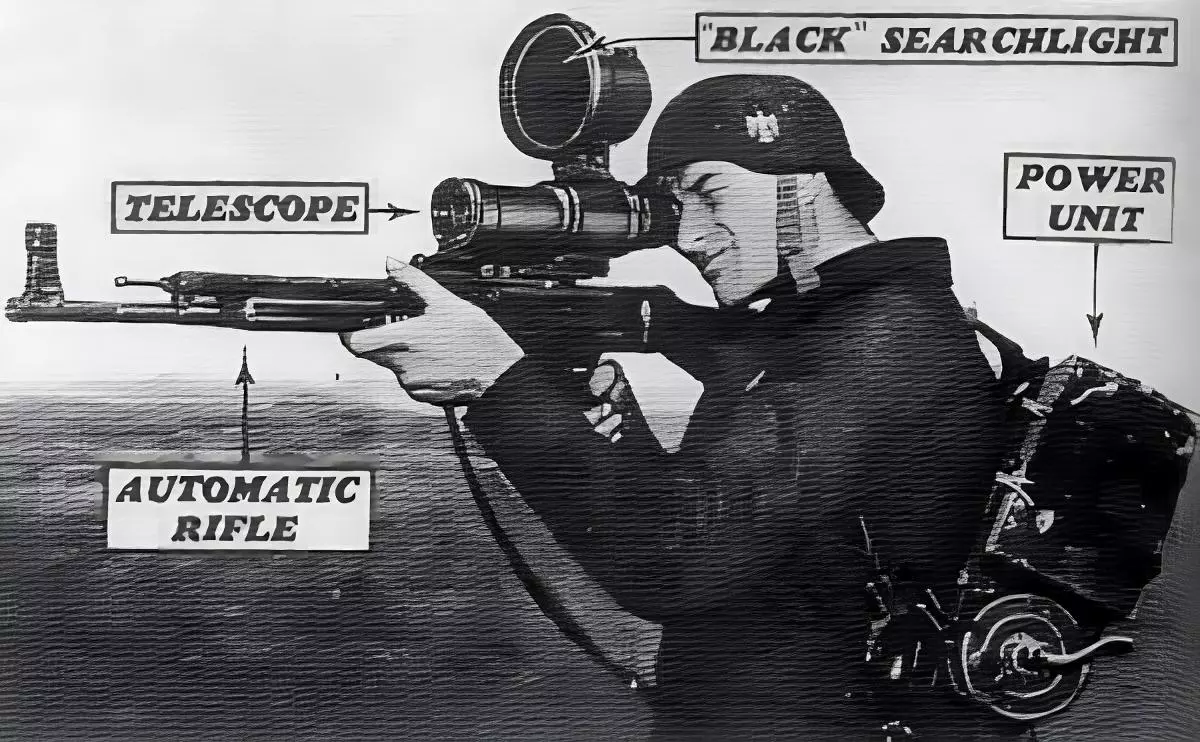Researchers at the University of Michigan have come up with a clever way of turning darkness into night vision with a new OLED approach thinner than paper – all while using off-the-shelf parts and existing OLED manufacturing processes.
Chris Giebink, professor of electrical engineering and computer science at the University of Michigan, may have come up with one of the biggest breakthroughs in night vision technology yet with a new type of OLED (organic light emitting diode). OLEDs are the type of light your iPhone or Samsung Galaxy S24 screen has, for example.
By creating a five-stack layer of OLED film that's less than 1/10th of a human hair thick, he and his research team have been able to convert infrared light into visible light and amplify it by over 100 times – all with "off-the-shelf" parts and using methods already in practice to manufacture OLEDs, making cost and scalability much more attractive.

They've done it in a pretty unique way as well. A photon-absorbing layer combined with a five-layer stack of OLEDs converts infrared light into electrons. The stack of OLEDs produces five photons for every electron that passes through. The electrons are then converted to visible light photons. Viola.
And while some of the photons get shown to the user's eye, others are reabsorbed into the photon-absorbing layer, creating a positive feedback cycle that further amplifies the amount of output light.
The team believes they can better optimize the design to improve the output as well.
There's also a "memory effect", called hysteresis, produced in the OLEDs that the research team believes could lead to computer vision systems usage. Machine learning and neural networks – artificial intelligence – can potentially sense and interpret images and light signals through their OLED night-vision system.
Depending on how long and bright a light source is changes the duration and intensity of the memory effect ... Imagine you're in a dark room and suddenly a bright light flashes in your field of view, and now you see purple spots for the next minute or so.
We can't help but wonder what this "ghosting" effect will have on a possible future product.
"The device operates at much lower voltage than a traditional image intensifiers," according to the research paper. And being mere microns in thickness, one could assume the device could be light-weight. Raju Lampande, University of Michigan postdoctoral researcher and lead author of the study said, "This marks the first demonstration of high photon gain in a thin film device."

Traditional night vision goggles are generally heavy, require a lot of power, and can be otherwise unwieldy when wearing them.
Modern NVGs collect ambient and infrared light which is passed through a photocathode and turned into electrons. Those electrons pass through a microchannel plate which multiplies the electrons significantly before being directed at a phosphor screen. The phosphor screen is sensitive to the electrons and turns them back into visible light.
Starlight is ample for a good NVG to allow a user to see in what otherwise might seem like complete darkness to the naked eye.
NVG images are generally green, as our eyes are more sensitive to green light and it's easier to make out details. There is a white phosphor choice of NVG as well as color. There are even thermal options to pick up on heat-signatures.
Believe it or not, night vision devices (NVD) have been around since just before World War II.
Generation 0 (zero), as they called it in 1929 when a Hungarian physicist named Kalman Tihanyi invented a TV camera that was sensitive to infrared light and was used for anti-aircraft defense in the UK.

By the early 1940s, the German Army was mounting them to Panzer tanks. Before the end of WWII in 1945, NVDs became mobile, as the Germans had figured out how to mount a 5 lb (2.26 kg) night-vision scope to their StG 44 rifles, connected to a 30 lb (13.6 kg) battery worn as a backpack, dubbed the ZG 1229 Vampir. NVDs gave the "Nachtjäger" an upper hand for nighttime war. It used a regular tungsten light with a filter that only allowed infrared light to pass through.

A later 1945 British binocular-style night vision device would require a 7,000-volt power pack. They were not particularly mobile and only a handful were made.
Skip forward to today and we can buy really cheap (or reeaallly expensive) NVGs for around a hundred bucks on Amazon that fit in our pockets. When this new thin film OLED technology (or others like it) hits the market, it could be as simple as applying a peel-n-stick sticker on your favorite pair of glasses.
Or maybe it'll just be in the form of eye-drops.
Source: Eurek Alert







